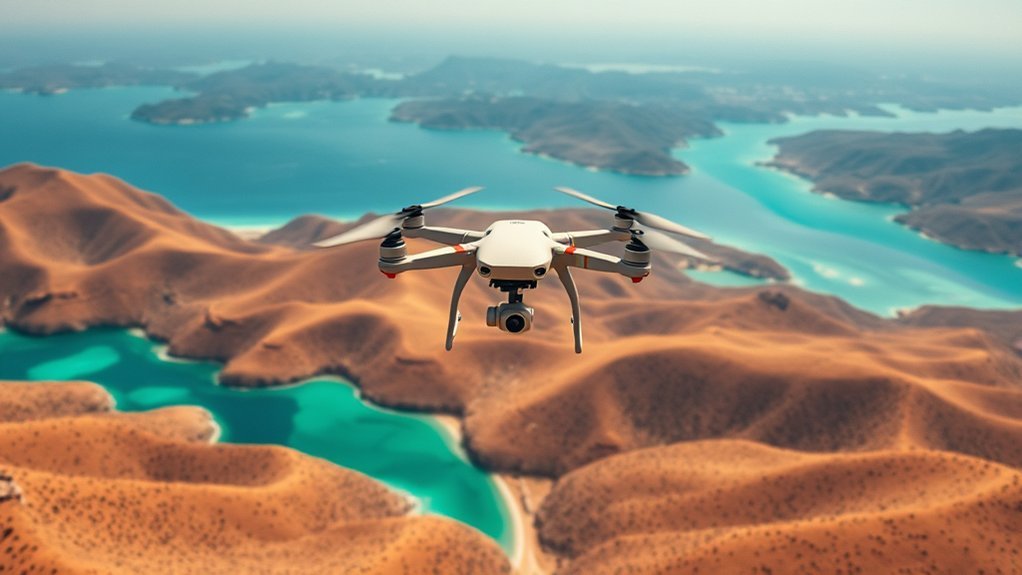You stumble upon this article at the same time you’re considering a drone purchase. You’re looking for a camera that can capture stunning aerial shots. What are the top picks for aerial photography and videography?
Key Takeaways
- High-quality cameras offer 4K Ultra HD resolution.
- Sensor size affects low-light performance and detail.
- Optical image stabilization enhances video clarity.
- Lens type influences field of view and focus.
- Durability is crucial for withstanding flight conditions.
Drone with Camera for Adults, 2K HD FPV Live Video & GPS
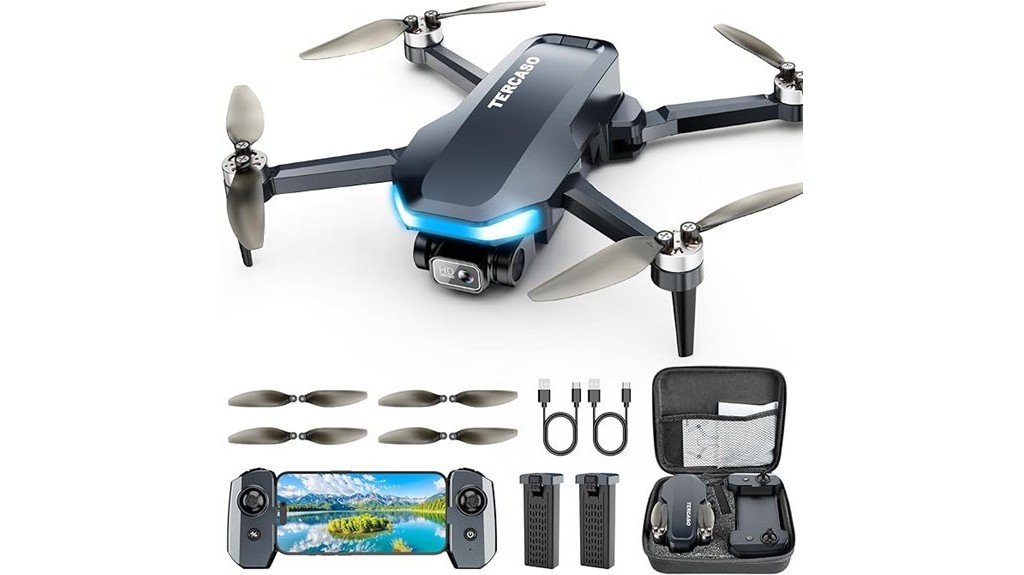
If you’re looking for a drone that’s perfect for adults, the “Drone with Camera for Adults, 2K HD FPV Live Video & GPS” is a great choice because it offers a 2K HD camera with FPV live video, which is ideal for capturing high-quality aerial footage. You’ll get features like GPS, auto return, and follow-me mode. It’s portable, foldable, and has a brushless motor, making it easy to take anywhere. You can capture stunning videos and photos with its 110° wide-angle camera.
Drone with Camera 1080P HD FPV Foldable Quadcopter
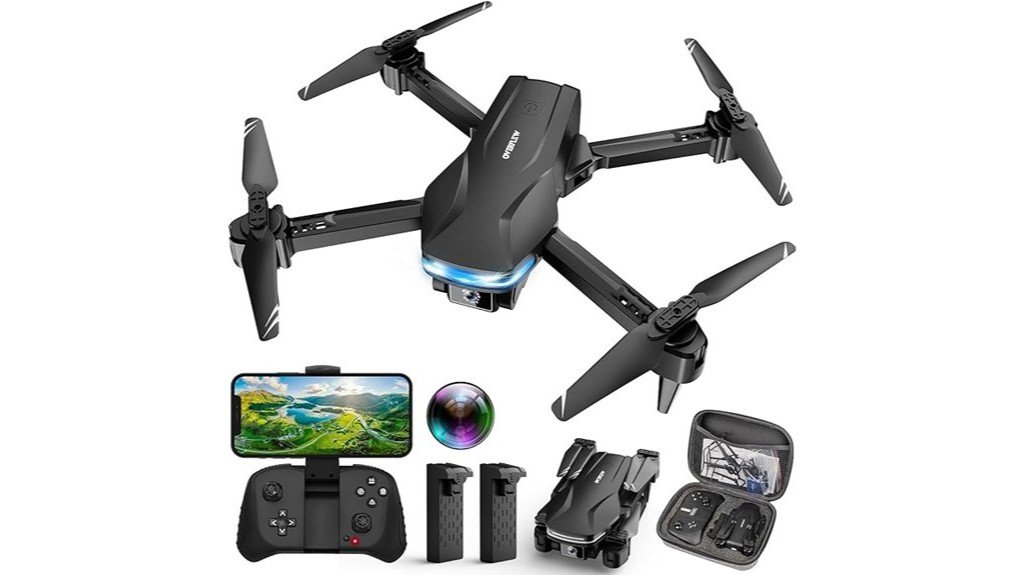
The Drone with Camera 1080P HD FPV Foldable Quadcopter is a top contender for adult drone enthusiasts, particularly those who value portability and high-quality video capture. You’ll get 1080p HD video and a foldable design for easy transport. It features adjustable-angle camera, Wi-Fi connectivity, and up to 26 minutes of flight time with two batteries. You can control it via remote, app, or gestures, making it a great option for aerial photography and videography.
Mini FPV Drone with 1080P HD Camera for Kids & Adults

You’re looking for a drone that’s perfect for kids and adults alike, and one key feature that stands out is the 1080P HD camera with a 90° adjustable lens, which makes it an excellent choice for beginners and experienced users. It’s compact, weighing 230 grams, and has a foldable design. You’ll get up to 30 minutes of flight time with two batteries. The drone also features FPV transmission, gesture-controlled photos, and 360-degree flips.
DJI Mini 4K Camera Drone Combo
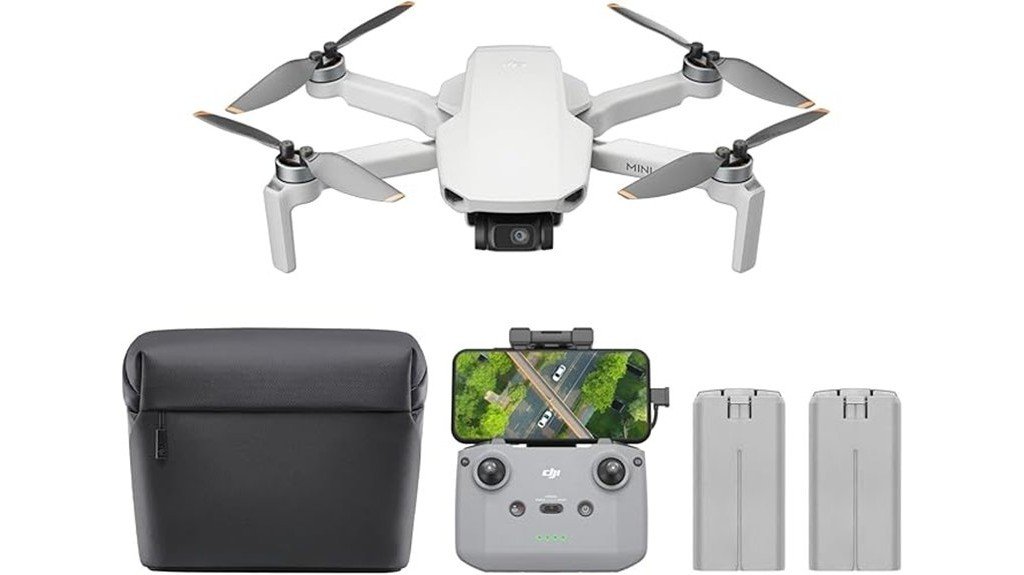
Recreational drone enthusiasts will love the DJI Mini 4K Camera Drone Combo, which weighs under 249g, making it exempt from FAA registration requirements. You’ll get a 4K Ultra HD camera with 12 MP effective still resolution and a 3-Axis Gimbal for cinematic quality. It has a max flight time of up to 62 minutes and a 10 km transmission range. You can capture smooth shots with ease, making it perfect for aerial photography and videography.
Drone with Camera 4K, Mini Foldable RC Drone for Kids and Adults
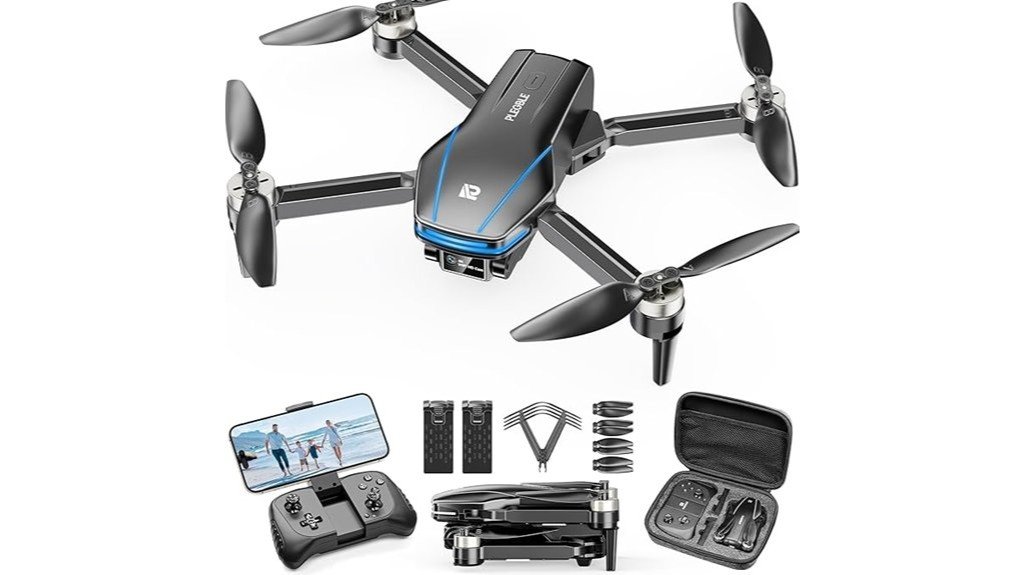
Since you’re looking for a drone that’s suitable for both kids and adults, a mini foldable RC drone with a 4K HD camera is an excellent choice, given its versatility and ease of use. You’ll get a 130° wide-angle lens and smooth FPV transmission. It features one-key takeoff/landing and voice control, making it user-friendly. With up to 28 minutes of flight time, you can capture great aerial photos and videos.
Holy Stone GPS Drone with 4K UHD Camera & FPV RC Quadcopter
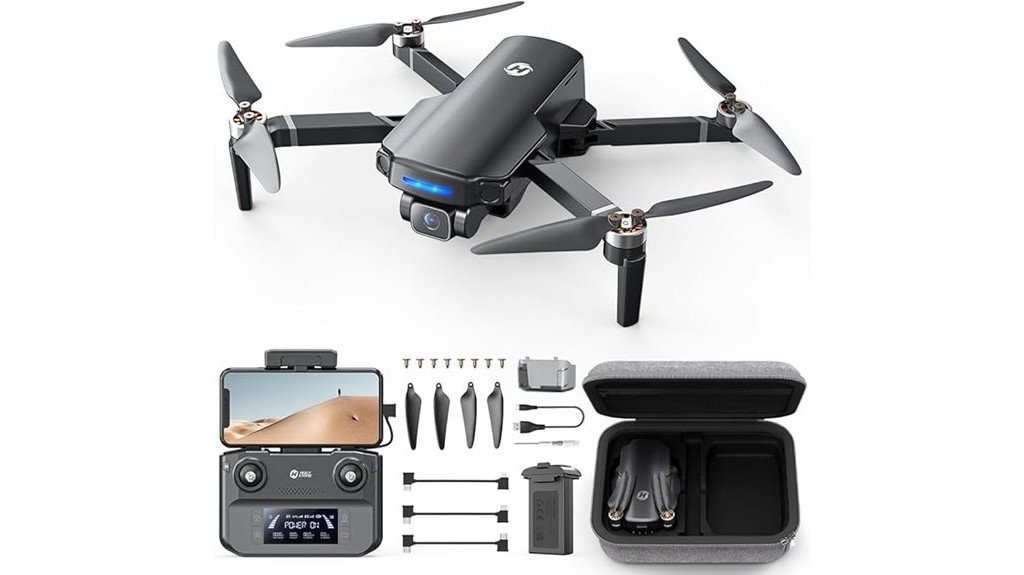
One key feature that makes the Holy Stone GPS Drone with 4K UHD Camera & FPV RC Quadcopter an excellent choice for drone enthusiasts is its 4K UHD camera with a GalaxyCore sensor, which captures stunning photos at a resolution of 3840x2160P. You’ll get high-quality images with its 85° adjustable wide-angle lens. The drone also features a 20-minute flight time and 10,000-foot control range, making it suitable for aerial photography and videography.
Bwine F7GB2 Pro Drone with 4K Camera
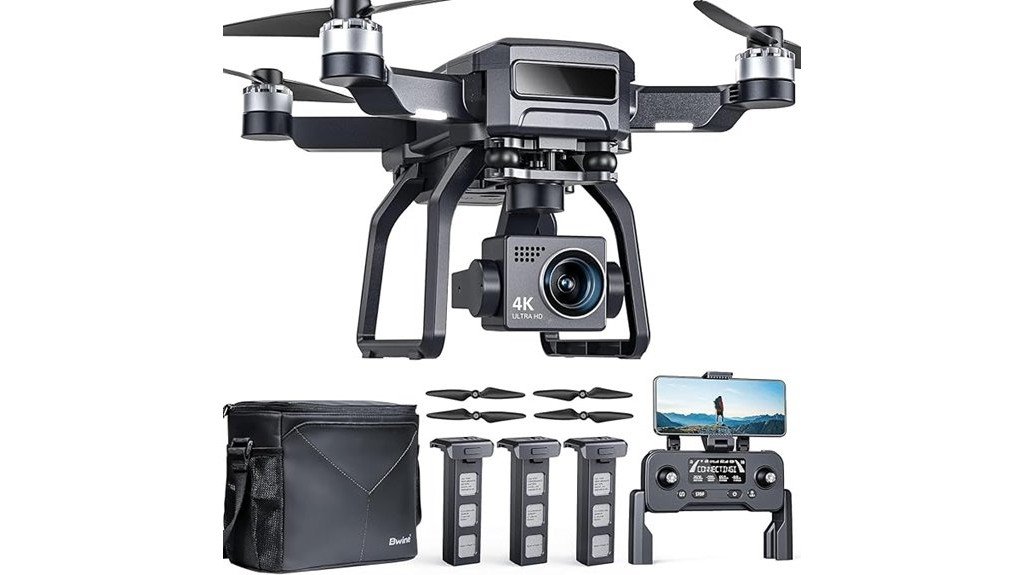
If you’re looking for a drone that captures stunning 4K footage, the Bwine F7GB2 Pro Drone is definitely worth considering. You’ll get a 4K UHD camera with a 3-axis gimbal and 120° FOV lens. It has a 10000FT control range and can fly at 2000m altitude. With 75 minutes of flight time, you can capture more footage. It weighs 550 grams and has smart GPS functionality for easy navigation.
2K HD FPV Drone with Camera for Adults
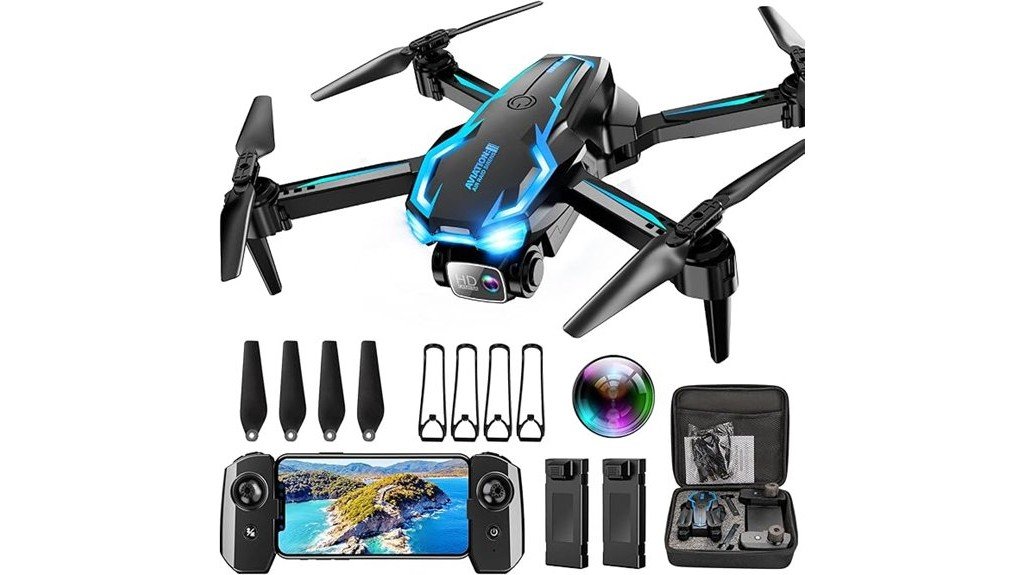
You’re looking for a drone that’s perfect for adults, and the 2K HD FPV Drone with Camera is definitely worth considering. It features a 2K Ultra HD camera with a 90° adjustable angle and real-time FPV transmission. You’ll get intuitive flight controls, 3 speed settings, and a compact design. With a total runtime of 20 minutes, you can capture stunning aerial footage with ease.
Best For: adults, beginners, and experienced drone users who want a compact, easy-to-use, and feature-rich drone for capturing high-quality aerial footage and photos.
Pros:
- The drone features a 2K Ultra HD camera with a 90° adjustable angle and real-time FPV transmission, allowing for stunning aerial footage and photos.
- It has intuitive flight controls, including one-key takeoff/landing, Altitude Hold, and Headless Mode, making it easy to operate for users of all skill levels.
- The drone is ultra-portable, compact, and lightweight, with a total runtime of 20 minutes, making it perfect for travel, hiking, and outdoor adventures.
Cons:
- The drone has a slight delay in the video feed, which may be noticeable for some users.
- It may not be suitable for extreme weather conditions or high-wind environments, as it is a lightweight drone.
- The drone’s battery life, although decent, may require more frequent recharging for extended use, which could be a drawback for some users.
Potensic Atom 2 Drone with 4K Camera for Adults
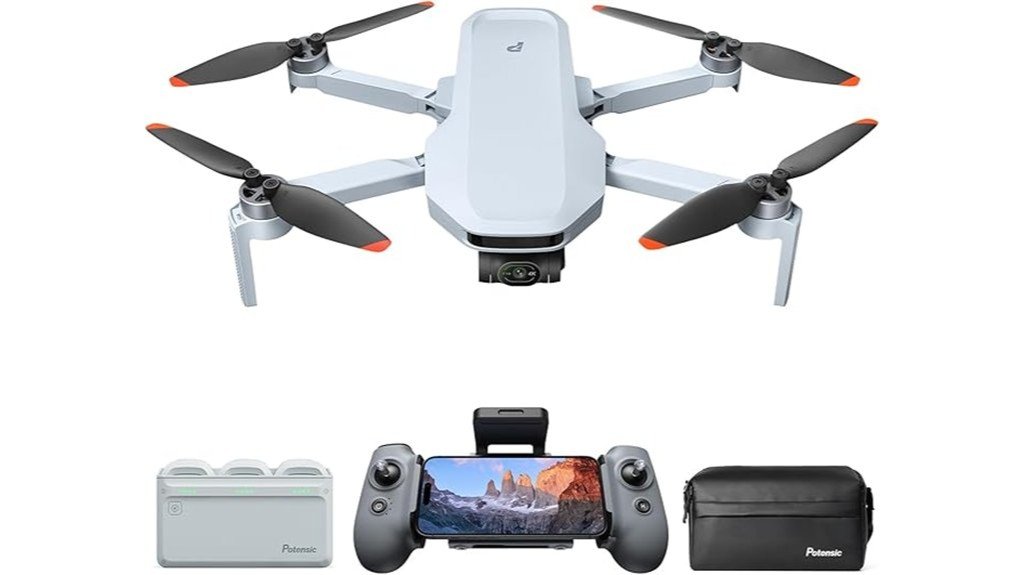
The Potensic Atom 2 Drone with 4K Camera for Adults stands out for its exceptional camera capabilities, making it the best choice for adults seeking high-quality aerial photography. You’ll capture 48MP photos and record 4K/30fps HDR videos with its 1/2 Sony CMOS sensor. It features various modes like 2.7K Vertical Shooting and Slow Motion, and you can share your footage quickly with SmartTransfer.
Best For: adults seeking high-quality aerial photography with a user-friendly drone that offers advanced features like AI tracking, stable flight, and high-resolution video recording.
Pros:
- The Potensic Atom 2 Drone offers exceptional camera capabilities, capturing 48MP photos and recording 4K/30fps HDR videos with its 1/2 Sony CMOS sensor.
- It features a compact and lightweight design, weighing under 249g, which eliminates the need for FAA registration and allows for easy transport and spontaneous flights.
- The drone has a long flight time, with the Fly More Combo providing approximately 96 minutes of total flight time, and a quick-charge hub that supports full charging of all batteries in 1.3 hours.
Cons:
- The Potensic Atom 2 Drone is not waterproof, which may be a concern for users who plan to fly in rainy or wet conditions.
- While the drone has a stable flight system, it may not perform well in strong winds or extreme weather conditions.
- The drone’s advanced features, such as AI tracking and SmartTransfer, may require some practice and familiarity to use effectively, which could be a challenge for beginner users.
GPS Drones with 4K Camera and Follow Me Mode
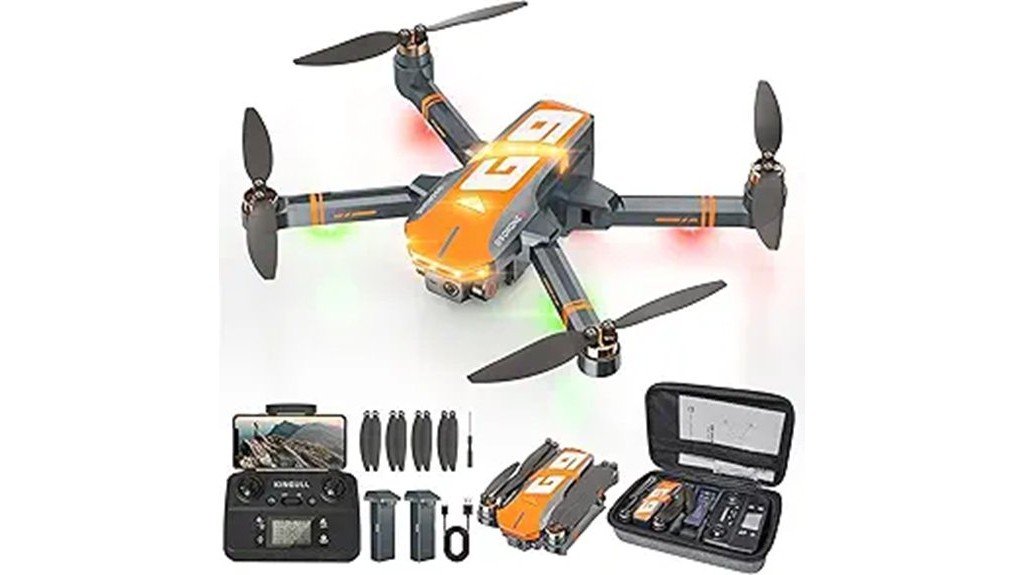
GPS drones with 4K camera and follow me mode, like the KINGULL G9, offer a self-contained, high-tech, photo-capturing system that’s perfect for beginners and hobbyists alike. You’ll get a 4K UHD camera, GPS follow me, and auto return features. The drone weighs under 249g, has up to 45 minutes of flight time, and a 90° adjustable lens with 120° wide-angle. You can capture stunning aerial photos and videos with ease.
Factors to Consider When Choosing Camera for Drone
You’ll want to consider several key factors when choosing a camera for your drone, including image quality and sensor size. The type of lens and video resolution are also crucial, as they’ll impact the overall clarity of your footage. As you evaluate your options, you should think about what field of view you need, and how it will affect the kind of shots you can capture with your drone.
Image Quality
When choosing a camera for your drone, considering image quality is crucial, as it directly impacts the clarity and detail of your captured footage. You’ll want to look at the resolution, with higher ones like 4K providing clearer images. The camera’s lens specs, such as field of view and adjustable angles, also matter. Additionally, features like optical image stabilization and gimbal systems enhance stability, reducing blurriness. You should also consider the formats it can capture, like JPEG and MP4, for versatility in content creation. These factors will help you choose a camera that meets your aerial photography and videography needs.
Sensor Size
As you consider a camera for your drone, the sensor size plays a significant role in determining image quality, capturing more light and producing better low-light performance and dynamic range with larger sensors. You’ll find common sensor sizes include 1/2.3″, 1″, and Micro Four Thirds, with larger sensors often in higher-end models. A larger sensor reduces noise, allowing for cleaner shots at higher ISO settings. It also affects the depth of field, enabling a shallower depth of field for better subject isolation. Keep in mind, larger sensors contribute to a heavier drone design, requiring more robust stabilization mechanisms.
Lens Type
The lens type of a drone’s camera significantly impacts your overall photography and videography experience, affecting the field of view and enabling you to capture more expansive shots with wider angles or focus on specific subjects with narrower angles. You’ll want a lens that provides flexibility, such as adjustable angles, to capture different perspectives. High-quality lenses enhance image clarity and reduce distortion. Consider the aperture size, as it influences low-light performance and depth of field. Lens coatings can also improve image quality by reducing glare and enhancing contrast, allowing you to capture better photos in varying lighting conditions.
Video Resolution
You’ll find video resolution is a crucial factor in determining the quality of footage captured by a drone, with common options including 1080p, 2K, and 4K, each offering progressively clearer and more detailed images. When choosing a camera, you should consider the intended use: 1080p may suffice for casual use, while 4K is preferred for detailed aerial photography or commercial projects. Higher resolutions like 4K provide four times the detail of 1080p, allowing for greater flexibility in post-production. You’ll want to balance resolution with frame rates, such as 30fps or 60fps, for smooth footage.
Field View
Factors like field of view significantly impact your drone’s camera capabilities. You’ll want to consider the extent of the observable area captured in a single image or video frame, typically measured in degrees. A wider field of view, such as 110° to 130°, is ideal for landscape photography, while narrower FOVs focus on specific subjects. Some drone cameras offer adjustable lenses, allowing you to modify the field of view for different scenarios. Understanding field of view is essential for achieving the desired composition and framing in aerial photography, influencing the overall visual storytelling of your captured content.
Low Light
Since capturing footage in low-light conditions is a common challenge, it’s crucial to consider a drone camera’s performance in such environments. You’ll want a camera with a larger sensor, like 1/2-inch or larger, to capture more light and detail. A wider aperture also helps, as it allows more light to enter the camera. Features like HDR and advanced image processing technologies, such as noise reduction algorithms, can improve low-light image quality. Stabilization technologies, like gimbals, reduce motion blur, making your footage smoother. These factors will help you choose a camera that performs well in low-light conditions.
Durability
When choosing a camera for your drone, durability is crucial because it directly affects the device’s ability to withstand the rigors of flight. You’ll want a camera that can handle vibrations and impacts, which can be enhanced by materials like reinforced plastics and aluminum alloys. A gimbal can provide added stability, reducing damage from sudden movements. Weather-resistant designs and regular maintenance, like cleaning the lens, are also essential. You should also consider the camera’s weight, as lighter cameras can reduce strain on the drone’s motors and frame, leading to fewer crashes and longer life.
